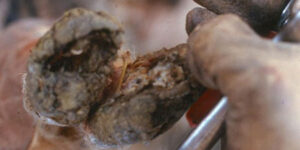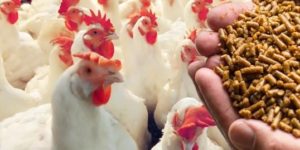Many pet owners’ biggest problem is their cat’s diet. Cats are notorious for being picky eaters, but they also need a balanced diet to ensure their overall health and well-being. Don’t worry, in this article, I’ll share 10 tips with you to help you improve your cat’s eating habits.
It’ll help you learn how you can ensure that your cat gets all the essential nutrients. Proper nutrition is important as it acts as a preventive measure against diseases and keeps your feline friend healthy. By following these ten tips you will be able to give your cat a healthy diet, leading to a healthy, happy, and long life.
1. Choose a Balanced Diet
You have to ensure that your cat is getting all the essential nutrients. To ensure this, what you can do is make sure to buy cat food that has a label complete, which means that the food contains all the essential nutrients your cat needs. Avoid complementary cat foods, which are intended as occasional treats and lack the comprehensive nutrition required for a cat’s health.
2. Exercise Caution with Homemade Foods
When you prepare food at home for your feline friend, make sure to consult their vet to ask about what should be included in it. Make sure you give your cat a balanced diet. Commercial cat foods are specially formulated to deliver essential nutrients, making it challenging for homemade meals to meet all your cat’s dietary requirements. If you do opt for homemade food, your vet may recommend supplements or vitamins to ensure proper nutrition.
3. Address Specific Health Needs
If your cat has specific health concerns or conditions, consult your vet for tailored dietary recommendations. Your veterinarian can suggest suitable foods or supplements to manage your cat’s condition and promote overall well-being. You must feed your cat considering its health conditions otherwise feeding something wrong can deter your cat’s health.
4. Avoid Toxic Foods
Beware of offering your cat treats from your plate, as some human foods are toxic to felines. No matter how much your cats want to eat from your plate, never risk their health. Foods like chocolate and dairy products can be harmful for your cats so avoid giving them to your cat at all.
5. Evaluate Dry Food Options
Dry food is also known as Kibble. It is the most common option that people use for feeding cats. Dry foods can be high in carbohydrates which can make your cat obese resulting in many other health issues. Just because dry foods are easy to feed, you shouldn’t just feed dry foods to your cat. Additionally, its low moisture content might impact kidney health. Commercial cat foods like Purina are specially formulated to deliver essential nutrients, making it challenging for homemade meals to meet all your cat’s dietary requirements.
6. Explore Raw Food Options
There is a growing movement towards feeding cats a raw food diet, with claims of potential benefits for various health issues. If you want to give your cat raw food, first do a lot of research. Also, consult with veterinarians to get professional advice. Properly prepared raw food can potentially address conditions like Irritable Bowel Disorder and allergies. Remember it is very crucial to properly prepare raw food. Any mistake or improper preparation can lead to deficiencies in your feline friend’s diet.
7. Opt for a Combination Diet
A lot of people prefer giving their cats a combination of different food types. They give their cats both dry and wet food at different times. Sometimes they also give their cat treats as supplements. You can also opt for this option but be careful of choosing a diet combination that fulfills your cat’s nutrient requirements and keep them hydrated.
8. Consider Wet Food
Some veterinarians recommend a diet consisting solely of wet or canned food. Feeding wet food has the advantage of providing additional hydration due to its moisture content. It is usually more palatable for cats and can be an effective way to administer supplements or medication. However, ensure that your cat consumes the meat rather than just licking off the gravy to avoid incomplete nutrition.
9. Choose Nutrient-Rich Treats
Treats can be a part of your cat’s diet without contributing to weight gain. Opt for high-quality treats rich in protein that can replace a portion of your cat’s regular food. Additionally, consider using treats for interactive play using a clicker, promoting engagement and bonding between you and your cat.
10. Manage Weight Effectively
Make sure that the diet you are choosing for your cat isn’t making it obese. For cats obesity is bad. It can lead to many health issues, such as heart disease or joint issues. Consult with a vet, he’ll help you understand what portion size is enough for your cat. So, you can prevent your cat from overeating.
Final Verdict
In short, if you want to improve your cat’s dieting habits you will need to be careful of their specific needs and dietary requirements. This will ultimately help you improve your cat’s diet habits without putting in so much effort. Whichever diet you choose for your cat, remember the focus should be on nutrition and hydration. Go for the options that keep your cat hydrated and fulfill their nutrition requirements. Follow the tips mentioned above and you will notice a significant change in your cat’s dieting habits making your feline friend healthy and happy.







